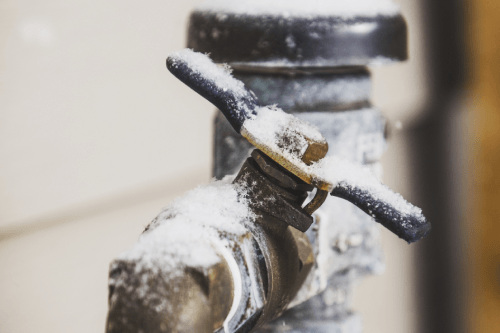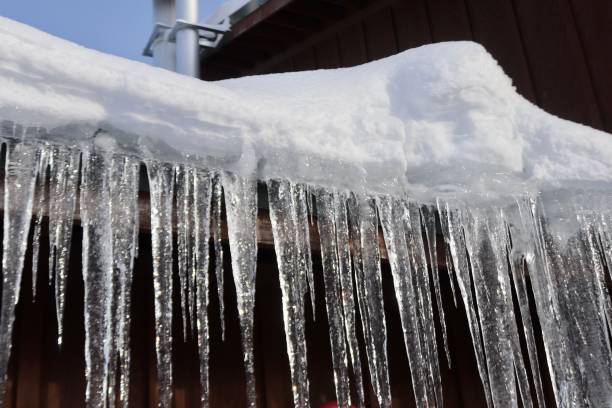Preventing Frozen Pipes in Cold Weather: Pro Tips
Preventing Frozen Pipes in Cold Weather: Pro Tips
Blog Article
Do you find yourself searching for tips about Prevent Frozen Pipes ?

Cold weather can damage your pipes, specifically by freezing pipelines. Right here's exactly how to avoid it from taking place and what to do if it does.
Intro
As temperature levels drop, the risk of frozen pipes rises, possibly causing pricey repair work and water damages. Comprehending exactly how to stop frozen pipelines is critical for home owners in cool environments.
Comprehending Frozen Pipelines
What creates pipelines to freeze?
Pipes freeze when subjected to temperature levels listed below 32 ° F (0 ° C) for extended periods. As water inside the pipes freezes, it broadens, taxing the pipe wall surfaces and potentially triggering them to break.
Dangers and problems
Frozen pipes can cause water system disruptions, residential property damages, and costly repairs. Ruptured pipelines can flood homes and cause considerable structural damage.
Signs of Frozen Piping
Identifying icy pipelines early can prevent them from rupturing.
How to identify frozen pipelines
Search for reduced water flow from faucets, uncommon odors or sounds from pipelines, and noticeable frost on exposed pipelines.
Avoidance Tips
Insulating susceptible pipelines
Wrap pipelines in insulation sleeves or make use of warmth tape to safeguard them from freezing temperatures. Concentrate on pipes in unheated or exterior locations of the home.
Heating techniques
Maintain indoor rooms sufficiently heated, specifically areas with pipes. Open closet doors to allow cozy air to distribute around pipes under sinks.
Safeguarding Outside Pipes
Garden hose pipes and outdoor taps
Detach and drain pipes yard hose pipes before winter season. Install frost-proof faucets or cover outdoor faucets with insulated caps.
What to Do If Your Pipelines Freeze
Immediate actions to take
If you suspect frozen pipelines, maintain faucets open up to alleviate pressure as the ice thaws. Make use of a hairdryer or towels soaked in hot water to thaw pipes slowly.
Long-Term Solutions
Architectural adjustments
Think about rerouting pipelines away from exterior walls or unheated areas. Include added insulation to attics, basements, and crawl spaces.
Updating insulation
Invest in high-quality insulation for pipelines, attic rooms, and walls. Appropriate insulation aids preserve constant temperature levels and minimizes the danger of icy pipes.
Final thought
Avoiding icy pipelines calls for positive measures and fast responses. By comprehending the reasons, indications, and safety nets, property owners can shield their plumbing during winter.
5 Ways to Prevent Frozen Pipes
Drain Outdoor Faucets and Disconnect Hoses
First, close the shut-off valve that controls the flow of water in the pipe to your outdoor faucet. Then, head outside to disconnect and drain your hose and open the outdoor faucet to allow the water to completely drain out of the line. Turn off the faucet when done. Finally, head back to the shut-off valve and drain the remaining water inside the pipe into a bucket or container. Additionally, if you have a home irrigation system, you should consider hiring an expert to clear the system of water each year.
Insulate Pipes
One of the best and most cost-effective methods for preventing frozen water pipes is to wrap your pipes with insulation. This is especially important for areas in your home that aren’t exposed to heat, such as an attic. We suggest using foam sleeves, which can typically be found at your local hardware store.
Keep Heat Running at 65
Your pipes are located inside your walls, and the temperature there is much colder than the rest of the house. To prevent your pipes from freezing, The Insurance Information Institute suggests that you keep your home heated to at least 65 degrees, even when traveling. You may want to invest in smart devices that can keep an eye on the temperature in your home while you’re away.
Leave Water Dripping
Moving water — even a small trickle — can prevent ice from forming inside your pipes. When freezing temps are imminent, start a drip of water from all faucets that serve exposed pipes. Leaving a few faucets running will also help relieve pressure inside the pipes and help prevent a rupture if the water inside freezes.
Open Cupboard Doors
Warm your kitchen and bathroom pipes by opening cupboards and vanities. You should also leave your interior doors ajar to help warm air circulate evenly throughout your home.

Hopefully you liked our post about How to prepare your home plumbing for winter weather. Thanks a lot for taking time to read our short article. Are you aware of anybody else who is looking into How to Prevent Your Pipes From Freezing? Please feel free to promote it. We cherish your readership.
Set Up An Appointment Report this page